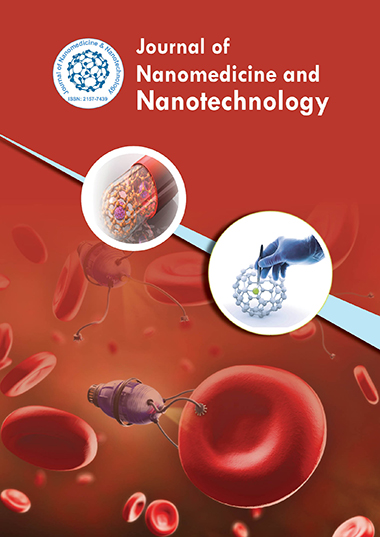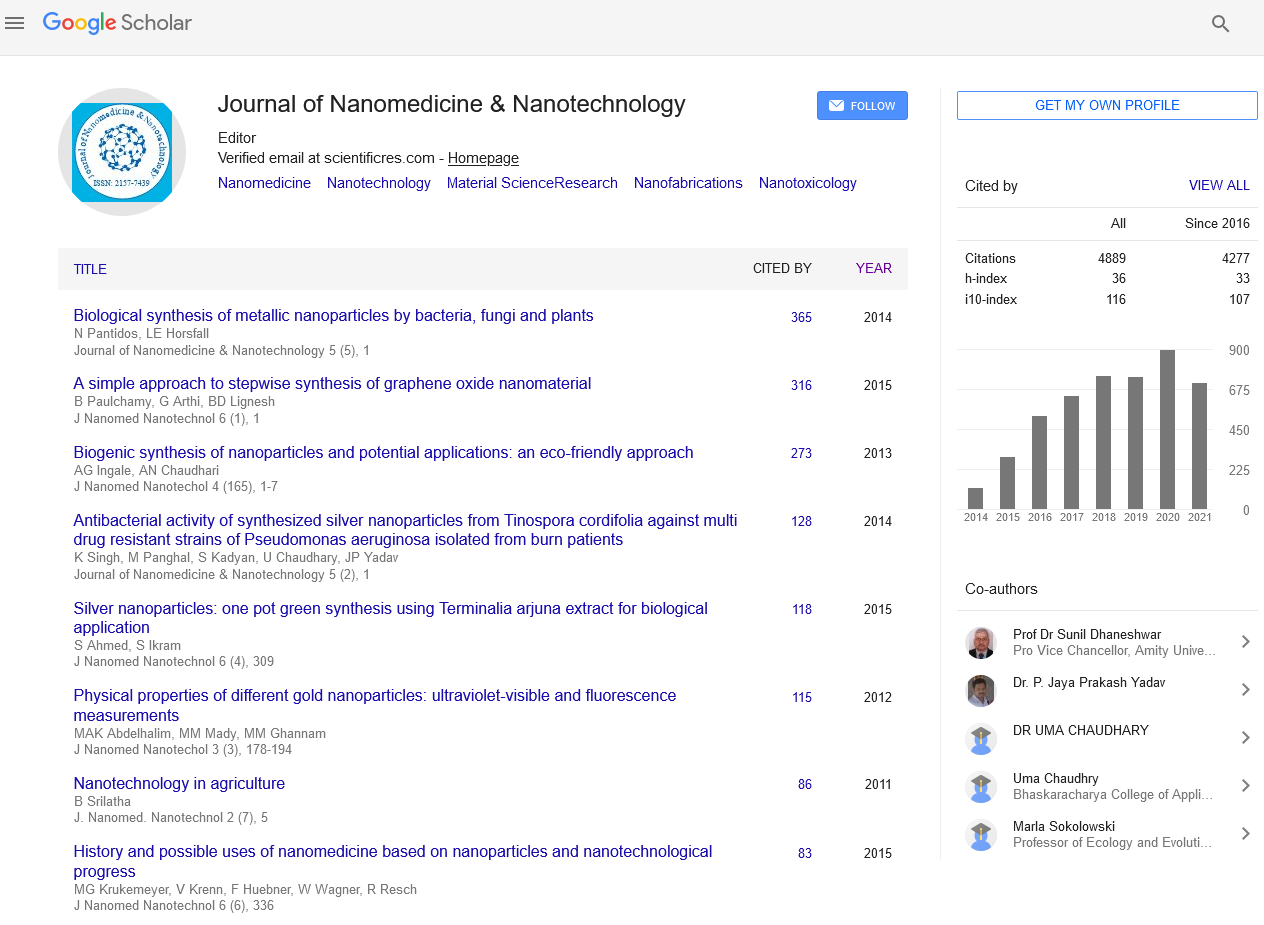Indexed In
- Open J Gate
- Genamics JournalSeek
- Academic Keys
- JournalTOCs
- ResearchBible
- China National Knowledge Infrastructure (CNKI)
- Scimago
- Ulrich's Periodicals Directory
- Electronic Journals Library
- RefSeek
- Hamdard University
- EBSCO A-Z
- OCLC- WorldCat
- SWB online catalog
- Virtual Library of Biology (vifabio)
- Publons
- MIAR
- Scientific Indexing Services (SIS)
- Euro Pub
- Google Scholar
Useful Links
Share This Page
Journal Flyer

Open Access Journals
- Agri and Aquaculture
- Biochemistry
- Bioinformatics & Systems Biology
- Business & Management
- Chemistry
- Clinical Sciences
- Engineering
- Food & Nutrition
- General Science
- Genetics & Molecular Biology
- Immunology & Microbiology
- Medical Sciences
- Neuroscience & Psychology
- Nursing & Health Care
- Pharmaceutical Sciences
An effective approach to reduce the penetration potential of sars-cov-2 and other viruses by spike protein: Through surface particle electrostatic charge negotiation
33rd World Nano Conference
October 24-25, 2022 | WEBINAR
Sudip Chatterjeea*, Kausik Rakshita, Durjoy Bandyopadhyaya and Somsekhar Sarkarb
Swami Vivekananda University, India Indian Institute of Science Education and Research, India
Scientific Tracks Abstracts: J Nanomed Nanotechnol
Abstract:
The objective of this paper is to provide a mathematical model to construct a barrier that may be useful to prevent the penetration of different viruses (Eg. SARS-COV-2) as well as charged aerosols through the concept of electrostatic charge negotiation. (Fusion for the opposite types of charges and repulsion for the similar types of charges). Reviewing the works of different authors, regarding charges, surface charge densities (σ), charge mobility (μ) and electrostatic potentials of different aerosols under varied experimental conditions, a similar intensive study has also been carried out to investigate the electron donating and accepting (hole donating) properties of the spike proteins (S-proteins) of different RNA and DNA viruses, including SARSCOV- 2. Based upon the above transport properties of electrons of different particles having different dimensions, a mathematical model has been established to find out the penetration potential of those particles under different electrostatic fields. An intensive study have been carried out to find out the generation of electrostatic charges due to the surface emission of electrons (SEE), when a conducting material like silk, nylon or wool makes a friction with the Gr IV elements like Germanium or Silicon, it creates an opposite layer of charges in the outer conducting surface and the inner semiconducting surface separated by a dielectric material. This opposite charge barriers may be considered as Inversion layers (IL). The electrostatic charges accumulated in the layers between the Gr IV Ge is sufficient enough to either fuse or repel the charges of the spike proteins of the RNA, DNA viruses including SARS-Cov-2 (RNA virus) or the aerosols. Key words: SEE, Transport properties, Inversion Layer, Surface charge density, SARS-Cov-2.
Biography :
Sudip Chatterjee is working as a Professor of Applied Physics at Swami Vivekananda University, India and engaged in the active research in the field of Nanotechnology, Nanocomposites and characterization of Bionanoparticles. He has published more than 30 Research articles in internationally reputed journals and has been invited by different organizations for giving Lectures on his research area. Before joining at Regent Education and Research Foundation, he has also worked as an Associate Professor at IFHE University, Hyderabad, India and as an Assistant Professor at Sikkim Manipal Institute of Technology.


